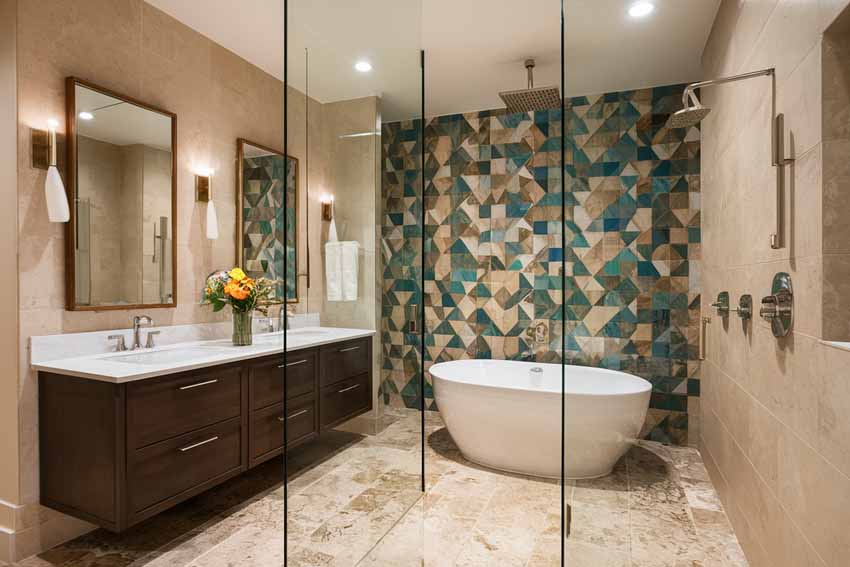Wood panelling has emerged as one of the most sought-after design trends in modern home interiors, transforming spaces with its natural warmth and sophisticated appeal. From luxury hotels to cozy family homes, this architectural element continues to capture the attention of homeowners and interior designers worldwide.
Recent market research indicates that the global wood panelling market reached $3.2 billion in 2023, with residential applications accounting for approximately 65% of total demand. This surge reflects a broader movement toward sustainable, natural materials that offer both aesthetic value and functional benefits.
Wood panelling refers to decorative wooden boards or sheets installed on walls, ceilings, or other interior surfaces. Unlike traditional wallpaper or paint, these panels add dimension, texture, and character to any room while providing practical advantages that extend far beyond visual appeal.
How Does Wood Panelling Transform Interior Spaces?
Wood panelling fundamentally changes the atmosphere of a room by introducing natural textures and organic patterns that create visual interest. The vertical or horizontal lines formed by the panels can make ceilings appear higher or rooms feel wider, depending on the installation direction.
The material naturally reflects and absorbs light in unique ways, creating subtle shadows and highlights that shift throughout the day. This dynamic quality gives rooms a living, breathing feel that painted walls simply cannot achieve.
Different wood species offer varying grain patterns, colors, and characteristics. Oak provides bold, pronounced grain lines, while maple offers a more subtle, refined appearance. Pine delivers a rustic charm with its natural knots and variations, and walnut brings rich, dark tones that add sophistication to any space.
What Practical Benefits Does Wood Panelling Provide?
Beyond aesthetic appeal, wood panelling offers numerous functional advantages that make it an intelligent choice for homeowners. These panels provide an additional layer of insulation, helping to regulate room temperature and potentially reducing energy costs by up to 15% according to building efficiency studies.
Sound absorption represents another significant benefit. Wood naturally dampens noise, making rooms quieter and more comfortable. This quality proves particularly valuable in homes with open floor plans or in rooms used for entertainment and relaxation.
Moisture regulation stands as one of wood’s most impressive natural properties. Properly treated wood panelling can absorb excess humidity when levels are high and release moisture when the air becomes dry, helping maintain comfortable indoor conditions year-round.
The durability factor cannot be overlooked. Quality wood panelling can last for decades with proper maintenance, making it a cost-effective long-term investment compared to other wall treatments that require frequent updates or replacements.
Why Are Homeowners Choosing Wood Panelling Over Other Options?
Current interior design surveys reveal that 73% of homeowners prefer natural materials over synthetic alternatives when renovating their homes. Wood panelling satisfies this preference while offering versatility that few other materials can match.
The installation flexibility appeals to both DIY enthusiasts and professional contractors. Modern panelling systems often feature tongue-and-groove or clip-on designs that simplify the installation process, reducing both time and labor costs.
Customization options have expanded dramatically in recent years. Homeowners can choose from various finishes, stains, and treatments to achieve their desired look. Some prefer the natural, unfinished appearance that showcases the wood’s inherent beauty, while others opt for painted or stained finishes that complement their existing decor.
The trend toward biophilic design has significantly boosted wood panelling’s popularity. This design philosophy emphasizes connecting interior spaces with nature, and wood panelling provides an ideal way to introduce natural elements into the home environment.
How Does Wood Panelling Compare to Traditional Wall Treatments?
Paint remains the most common wall treatment, but it requires frequent touch-ups and complete repainting every few years. Wood panelling, once installed, typically needs only occasional dusting and periodic conditioning to maintain its appearance.
Wallpaper offers pattern and texture options but can peel, fade, or become damaged over time. Wood panelling provides natural texture and pattern that improves with age, developing a patina that adds character and value.
Tile and stone alternatives can achieve similar durability but often feel cold and lack the warmth that wood naturally provides. They also require professional installation and can be significantly more expensive when factoring in both materials and labor costs.
What Maintenance Requirements Should Homeowners Consider?
Proper maintenance ensures wood panelling retains its beauty and functionality for many years. Regular dusting with a soft cloth removes surface debris and prevents buildup that could dull the wood’s natural luster.
Occasional conditioning with appropriate wood care products helps maintain the material’s moisture content and prevents cracking or splitting. The frequency depends on the wood type and environmental conditions, but most experts recommend conditioning every 6-12 months.
Prompt attention to any scratches or dents keeps the panelling looking fresh. Minor imperfections can often be addressed with wood markers or touch-up pens, while deeper damage might require light sanding and refinishing of the affected area.
Humidity control plays a crucial role in maintaining wood panelling. Extreme dryness can cause shrinkage and cracking, while excessive moisture might lead to warping or other issues. Maintaining indoor humidity levels between 30-50% provides optimal conditions for wood preservation.
Which Rooms Benefit Most from Wood Panelling Installation?
Living rooms and family rooms represent the most popular applications for wood panelling. These spaces benefit from the warm, inviting atmosphere that wood creates, making them feel more comfortable and welcoming for both residents and guests.
Bedrooms gain a cozy, intimate feel when enhanced with wood panelling. The natural material creates a restful environment that promotes relaxation and better sleep quality.
Home offices increasingly feature wood panelling as remote work becomes more common. The professional appearance adds credibility to video calls while creating an inspiring workspace that feels separate from the rest of the home.
Dining rooms transform with wood panelling, taking on a sophisticated elegance that enhances the dining experience. The material provides an excellent backdrop for artwork and creates an upscale ambiance for entertaining.
How Does Wood Panelling Impact Property Value?
Real estate professionals report that quality wood panelling typically adds value to homes, with well-executed installations contributing to higher resale prices. The key lies in choosing appropriate wood types and installation styles that complement the home’s overall architecture and design.
Buyers increasingly appreciate natural materials and sustainable building features. Wood panelling checks both boxes, especially when sourced from responsibly managed forests or reclaimed sources.
The perceived luxury factor also influences property value. Wood panelling conveys quality and attention to detail that buyers often associate with premium homes, making properties more competitive in the marketplace.
What Future Trends Are Emerging in Wood Panelling?
Sustainable sourcing continues to gain importance among environmentally conscious consumers. Reclaimed wood panelling offers unique character while reducing environmental impact, making it an increasingly popular choice.
Mixed material approaches combine wood panelling with other elements like metal accents or glass panels, creating contemporary looks that appeal to modern homeowners seeking unique design solutions.
Technology integration represents an emerging trend, with some manufacturers developing smart wood panelling systems that incorporate LED lighting, wireless charging capabilities, or integrated storage solutions.
Making the Right Choice for Your Home
Wood panelling offers an exceptional combination of beauty, functionality, and value that few interior design elements can match. The natural warmth, practical benefits, and long-term durability make it an intelligent investment for homeowners seeking to enhance their living spaces while potentially increasing property value.
The growing popularity of wood panelling reflects a broader appreciation for natural materials and sustainable design choices. As installation techniques continue to improve and new product options emerge, this timeless material remains perfectly positioned to meet the evolving needs of modern homeowners who value both style and substance in their interior design decisions.




